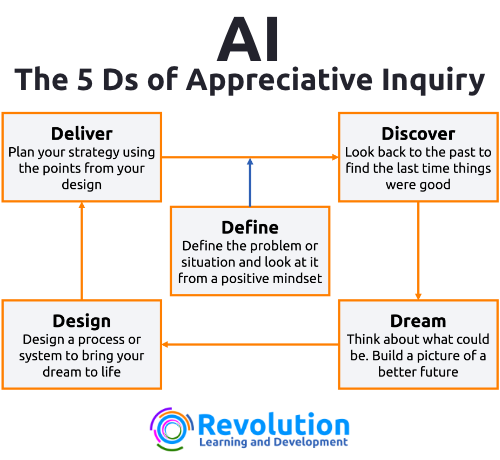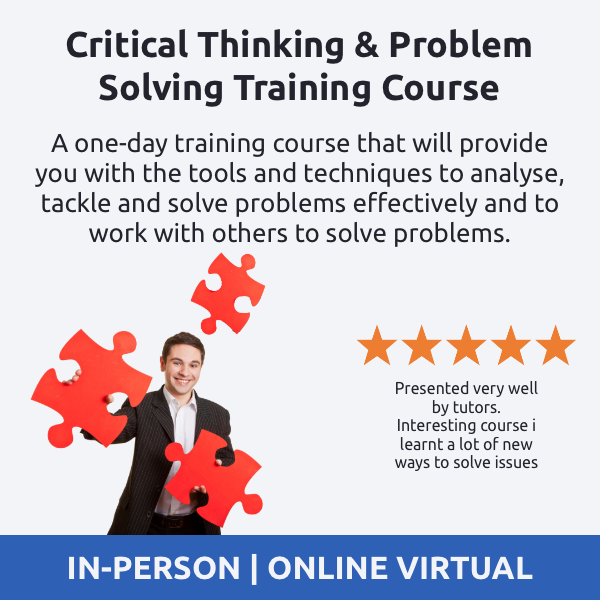[toc]
What is Appreciative Inquiry?
When things aren’t going to plan, it’s easy to start looking at all of the things that are going wrong and considering what can be done to fix them. When it comes to problem-solving this tends to be the normal approach and in some cases the right approach to take.
What it can do in some situations is drive so much negativity that it’s hard to find the things that are wrong, just because when we talk negatively we tend to react negatively (take a negative attitude). It then becomes much more difficult to think of positive solutions with a ‘negative hat’ on.
Appreciative Inquiry is about looking at positives – to create positivity. When we feel positive we’re much more likely to succeed. The idea of Appreciative Inquiry was developed by David Cooperrider of Case Western Reserve University in the 1980s.
The 2 Parts of Appreciative Inquiry
Let’s start by looking at the two words that make up the name of the technique. This should help us to begin to understand what it all means:
- Appreciate – recognise the value of the contributions of the things or people around us
- Inquire – explore and discover, to better understand and be open to new ideas and possibilities
When put together, it means that we appreciate what is good and valuable in the present situation, then we can discover and learn about ways to effect positive change for the future.
How to Use Appreciative Inquiry

- Define – Define the problem. Before you can start to analyse a problem or situation you first need to be clear on exactly what you are looking at. Because you have chosen a positive mindset, you will begin to look at the problem from a more positive viewpoint. Think about the language you use, the way you communicate with people working with you on the problem and what kind of behaviours you demonstrate. Talk about things from a positive viewpoint i.e. instead of saying ‘how to fix poor sales’ say ‘how to increase sales’.
- Discover – Here is where you begin to look at the past and look at all of the things that are good, or even right back to a time when things were good or better. Understand what was/is good, why it was was good. Find out what people find most valuable about the organisation, the current process or products and services. Once you have all of this you can not start to look at the data and begin to understand why it was good – what were the factors that were making it good?
- Dream – At this stage, you should begin to think about the ‘what could be’. Building vivid pictures and ideas of what the future could look like if things were good/better again. You should think about how to take the things from the previous stage and consider how good things would be if it was like that again. Use techniques such as brainstorming to consider how these things might work and what could be achieved.
- Design – Here you need to start looking at how practical your ideas are – will the past work again or have things changes so significantly that this just won’t work anymore. This is where you need to think about systems, processes and plans of how to make the vision come to life. Our Process Mapping Training Course will be useful with some ideas for this stage.
- Deliver – This is the stage where you begin to plan your strategy to achieve the ideas you came up with within the dream stage. It’s taking the points from the design stage and beginning to turn those into a workable plan. You need to keep the dream/vision as a point of focus and build plans to move closer towards it. Use Project Planning techniques such as plans, milestones and objectives to move closer to the dream. Our Project Management Training Course will provide some useful insight on this stage.
So, next time you’re faced with a problem, don’t always think negatively – look for the positives and use the Appreciative Inquiry technique to find better ways to get a more positive outcome.
Appreciative Inquiry Training Course
If you would like to know more about appreciative inquiry and how to use it in your day to day work, our Critical Thinking and Problem Solving Training Course will provide you with some help and guidance on this.



